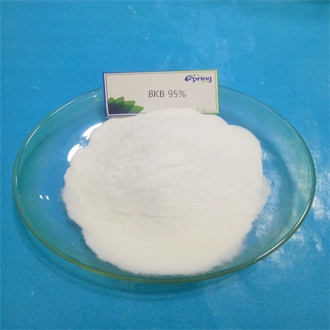Both glutaraldehyde and benzalkonium bromide solution are powerful chemicals used in various applications, including healthcare, disinfection, and veterinary medicine. However, they come with specific precautions that must be followed to ensure safe and effective use.
Precautions for the Use of Glutaraldehyde:
Personal Protective Equipment (PPE): When working with glutaraldehyde, always wear appropriate PPE, including gloves, safety goggles, lab coats, and, if necessary, a respirator. This chemical can irritate the skin, eyes, and respiratory system.
Ventilation: Use glutaraldehyde in a well-ventilated area or under a fume hood to minimize inhalation exposure. Ensure proper airflow to reduce the concentration of vapors in the working environment.
Dilution: Dilute glutaraldehyde solutions according to manufacturer instructions. Avoid mixing it with other chemicals unless specified by the manufacturer, as some combinations may produce hazardous reactions.
Avoid Skin Contact: Prevent skin contact with undiluted glutaraldehyde. In case of contact, wash the affected area thoroughly with water and soap.
Eye Protection: Protect your eyes with safety goggles or a face shield to prevent splashes. In case of eye contact, flush the eyes with water for at least 15 minutes and seek immediate medical attention.
Respiratory Protection: If the concentration of glutaraldehyde vapors exceeds permissible exposure limits, use a respirator with the appropriate filters.
Storage: Store glutaraldehyde in a well-ventilated, cool, and dry place. Keep containers tightly closed and away from incompatible materials, such as strong acids or bases.
Labeling: Always label containers containing glutaraldehyde solutions clearly to prevent accidental misuse. Include information on concentration and hazards.
Training: Ensure that personnel handling glutaraldehyde are adequately trained in its safe use and are aware of emergency procedures in case of exposure.
Emergency Response: Have eyewash stations, emergency showers, and spill control measures readily available in areas where glutaraldehyde is used. Create and communicate an emergency response plan.
Precautions for the Use of Benzalkonium Bromide Solution:
Dilution: Follow the manufacturer's instructions when diluting benzalkonium bromide solution. Avoid using it at higher concentrations than recommended, as this can lead to skin and eye irritation.
Personal Protective Equipment (PPE): Wear appropriate PPE, such as gloves and safety goggles, when handling benzalkonium bromide solution to prevent skin and eye contact.
Ventilation: Work in a well-ventilated area to minimize exposure to any vapors or fumes that may be released during use.
Avoid Ingestion: Benzalkonium bromide should never be ingested or brought into contact with the mouth. Store it in a location inaccessible to children or unauthorized personnel.
Storage: Store benzalkonium bromide solution in a cool, dry place, away from incompatible materials, such as strong acids or bases. Keep containers tightly sealed.
Labeling: Clearly label containers holding benzalkonium bromide solutions with essential information, including concentration, date of preparation, and safety warnings.
Training: Ensure that individuals handling benzalkonium bromide solution are trained in its safe use and are aware of appropriate emergency response procedures.
Emergency Response: Have access to eyewash stations, emergency showers, and spill cleanup materials in areas where benzalkonium bromide is used. Establish clear protocols for addressing accidental exposures.
Incompatibilities: Be aware of potential chemical incompatibilities when using benzalkonium bromide with other substances. Consult safety data sheets and guidelines to prevent hazardous reactions.
In summary, both glutaraldehyde and benzalkonium bromide solution are valuable chemicals but require careful handling and adherence to safety precautions to protect personnel and the environment. Always consult manufacturer instructions and safety data sheets for specific guidance on safe usage and disposal of these chemicals in various applications.
Post time: Sep-27-2023


